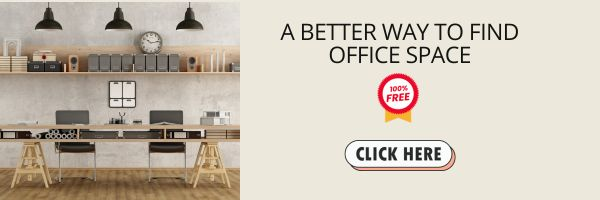The advantages brought by green workspaces go beyond the environmental perks that everybody has heard of at least once in their lifetime. Rising bodies of studies demonstrate that sustainable facilities directly impact employees’ wellbeing. Naturally lit spaces, cleaner breathable air, less appliance-generated background noise, and a slew of other green improvements are linked with increased productivity in the workspace, improved employee health, and more satisfaction. Consequently, such enhancements improve worker retention, developing a productive and stable workforce that’s key to sustainable scaling. Green spaces are also shortcuts to luring invaluable skills.
Gen Z and Millennials are the largest generations joining the workforce today, and they’re increasingly aware of the value that green office spaces bring. Thus, businesses that promote environmental sensitivity and encourage social awareness gain an unparalleled edge. Companies can prove they’re good long-term choices with green practices and workspaces, as today’s talent pool treasures sustainability, consequently drawing the top workforce depending on the industry.
With these being said, let’s see what 2025 brings in terms of green practices that one-up businesses’ sustainability and employee appeal.
Waste management solutions
Some solutions can help workers expedite the process of getting rid of the waste that eco-oriented establishments take on. Balers for EPS, for instance, process waste in an instant and can be automated or manually operated, based on the selected model. These are known to save businesses money and time, reducing the frequency of trash collection. These systems can be rented or bought – depending on the business’s activity and industry of operation. Costs are reduced in more ways, like the slashed landfill tax paid for dumping waste into the landfill.
Investing in a baler can generate a new revenue stream since outcomes like recycled cardboard can be sold further. Businesses reap numerous advantages from introducing good waste management solutions, and given the baling industry’s large size, the variety of products on the market is also abundant enough to cater to more needs.
Air Quality
To improve air quality, businesses can introduce superior air filtration systems and replace filters frequently to remove debris and dust from clogging up. Additionally, it’s essential to monitor the humidity levels in the room, for a too-dry or too-humid atmosphere can lead to serious health issues. Keeping humidity between the 30% and 50% level can reduce threats like allergens and mold from messing up with employees’ health.
Adding plants inside the workspace is a common practice to improve the air quality. Numerous plants, such as aloe vera, English ivy, peace lily, bamboo, dracaena, and rubber plants, are known to purify the air when brought in abundance. Additionally, many are super easy to maintain. Take the bamboo—you only add water when the existing one in the holder evaporates.
AI-based sensors
Technology plays a crucial role in making offices more eco-friendly, which is why businesses using AI-based sensors are leading the pack in smart investments. Companies use AI-run sensors to track electricity consumption and CO2 emissions live. This gear offers actionable data that helps businesses better know which systems consume more and where to invest in electricity-consumption-reducing solutions, ensuring that targeted updates are made. Ikea, for instance, presents a “People and Planet Positive” scheme that establishes the direction of each of the conglomerate’s franchises, covering the areas of:
- Healthy & Sustainable living – slashing more CO2 emissions than the whole value chain releases
- Circular & Climate Positive – enabling over 1BN individuals to improve their everyday lives
- Fair and Equal – leaving a positive social impact on all business areas.
Water-conserving system
Water preservation is a vital element in green offices, and the need for water-efficient systems in modern work facilities can no longer be neglected. There are numerous solutions future-oriented businesses can integrate into their everyday operations, including dual-flush systems, sensor-based taps, low-flow faucets, and so on. Tech also has its critical role, with developments like the IoT-run water tracking gear making every drop count and saving incommensurable amounts from going to waste.
Workspaces also introduce superior plumbing systems that boast green certifications like WELL and LEED. Such developments reduce waste and offer a reliable model for businesses looking to make a difference through their water usage. Some pioneers are also releasing awareness-raising campaigns that encourage workers to conserve water outside the workspace, too.
The shift to green buildings
Green buildings reshape what people understand through real estate development. The construction industry accounts for almost 40% of carbon dioxide emissions worldwide, mainly from transportation and production. However, the demand for greener spaces brings about solutions like smart lighting, solar panels, natural ventilation, and ‘living’ walls with plants that businesses from all spheres can use.
Interestingly, constructions with rain gardens, biodiverse roofs, and urban farms are bringing the outside into the office space, improving air quality and slashing electricity consumption.
Natural light
Sustainable offices combat the excessive consumption of energy and consequential CO2 footprint. Green coworking scenes provide things like natural light by opting for buildings with floor-to-ceiling windows, thus limiting dependence on the electrical system.
This perk reduces workers’ eye strain and consequent fatigue – two problems that employees commonly deal with in today’s ever-digitized working environment.
There are also LED lighting systems that match individuals’ circadian rhythms, fine-tuning the light spectrum to improve productivity and wellbeing.
Employee-driven initiatives
Office culture weighs as much regarding workplace sustainability and infrastructure does. Businesses prioritize employee-based initiatives more than ever, whether it’s introducing reusable lunch containers or implementing rewarding systems for waste reduction.
Simple steps can considerably level up a business in its pursuit to become more sustainable.
Parting words
Sustainability grabs the headlines and rules in office design, promoted by regulatory changes, environmental concerns, and a joint ambition to shift to greener practices. By integrating sustainable solutions like the ones mentioned above, your business can slash the CO2 footprint, reduce costs, improve employee well-being, enhance brand reputation, and unlock a new category of stakeholders: eco-conscious employees and clients.


